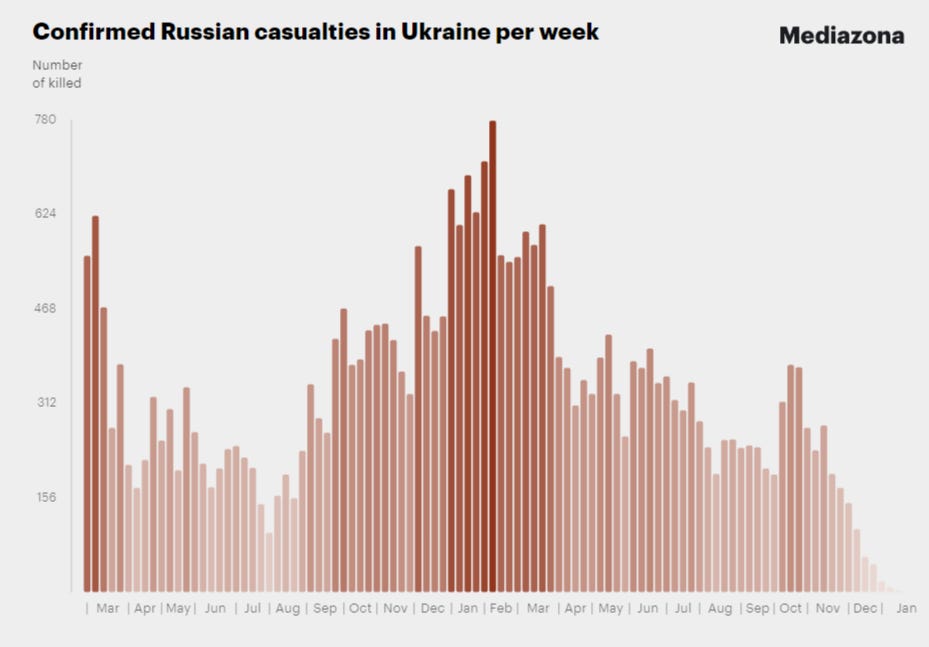So what you are saying is Russia might wind up deploying more effective platforms more quickly as a result of this loss, aka, 'Russia got stronger' in this?P.U.T.U said:
Issue is I don't think they are building the A-50 anymore as they are focusing on the A-100 which appears to have a cost from $700 million to $1 billion each. The A-100 also requires high speed processing chips that Russia can't build and sanctions are slowing them down from getting them.
Interesting theory. I am not clear at all on if they have built 1 or 2 of these, but I had read they only had 2 A-50's actually active.
The Chinese also certainly have an ability to assist if they choose to do so, but what little I know is that they seem to have been moving more to unmanned platforms;Quote:
The first flight of the A-100 prototype took place in February 2019. Earlier, an experimental A-100LL performed several flights as part of flight design tests.
An informed source told Russian state-owned agency RIA Novosti that the aircraft on February 9 made its maiden flight with radar equipment turned on.
The Premier program began in 2006 and the A-100 was scheduled to enter service in late 2020. It is being built by Vega Concern, Taganrog Beriev Aircraft Scientific and Technical Complex (TANTK) and United Aircraft Corporation (UAC) to provide an edge over the Cold War-era A-50 Mainstay being used by the Russian Aerospace Forces (VKS).
Russia wants to complete testing the A-100 by 2024.
Under the Premier-476 program, the new radar equipment was first mounted on an old 1990 built AWACS A-50 aircraft. It became a flying laboratory, which worked out the individual elements of the complex.
The modernized lightweight Il-76MD-90A aircraft produced in Ulyanovsk at the Aviastar-SP enterprise was chosen as the platform for the A-100. It can be on duty a thousand kilometres from its base for six hours in the air. It can be refuelled in flight.
The Airborne Warning and Control System (AWACS) will be placed 200km from the front line and can detect far into the depths of the enemy's defenses. The latest AWACS planes can transmit target data fully automatic without using voice communication. The Russians claim it is almost impossible to "muffle" it with electronic warfare (EW).
The Premier has a new dual-band phased array radar using which it will be able to detect air and sea and ground targets. The aircraft has an increased detection range and can better distinguish targets, including aircraft 'invisible' to conventional radars and cruise missiles created using stealth technologies. The Russian flying radar can reportedly simultaneously track up to 300 targets at 650 km.
Quote:
A future airborne warning and control system (AWACS) will likely not be one single early warning aircraft, but a cluster of platforms that can accomplish different missions and build an information network, said chief designers of China's early warning aircraft. The development trend of the world's most advanced AWACS has two aspects, namely the capability of an individual aircraft and the system, Lu Jun, chief designer of China's KJ-2000 early warning aircraft, said in a seminar organized by xinhuanet.com, the website of the Xinhua News Agency, on 06 July 2021.
For individual aircraft, they will be more capable of dealing with small targets, stealth aircraft and drones, said Lu, also an academician at the Chinese Academy of Engineering. But war is not about just an individual aircraft, but a system, so there should be space, aerial, ground, maritime and underwater platforms integrated together and doing their job, Lu said, noting that this will enhance the joint combat capability based on an information network system. The fast-developing military intelligentization will also contribute to the development of AWACS, Lu said.
Cui Jixian, the executive deputy designer of China's KJ-500 early warning aircraft and the chief designer of country's next generation AWCAS, said at the seminar that future AWACS will definitely become an information network system that includes not only one single aircraft, but a cluster of platforms that can either operate together or alone. These platforms will play their specially designed roles based on the demands of combat missions, with the final goal being winning the war, Cui said, noting that both large and small AWCAS platforms are future trends.
Some Chinese military observers and analysts have been discussing whether larger platforms like the KJ-2000 or smaller platforms like the KJ-500 or even drones are better candidates for future AWACS development, but the two chief designers' remarks indicate that both types could be developed, a Chinese military expert told the Global Times on 08 July 2021, requesting anonymity.
The KJ-2000 was developed based on the Russian 190 ton-class Il-76 large transport aircraft, and the KJ-500 is derived from the domestically made 60 ton-class Y-8 medium-sized transport aircraft. The Y-20 large transport aircraft is a good platform to spawn an early warning variant, and completely new platforms could be in the works, the expert said.

I think the Russians have also been wary of giving the CCP a 'foot hold' into their surveillance technology/platforms.


